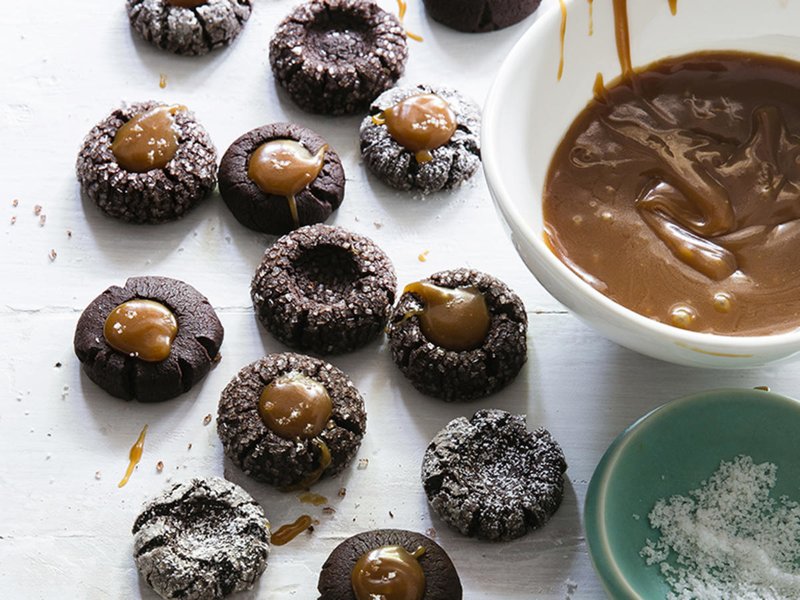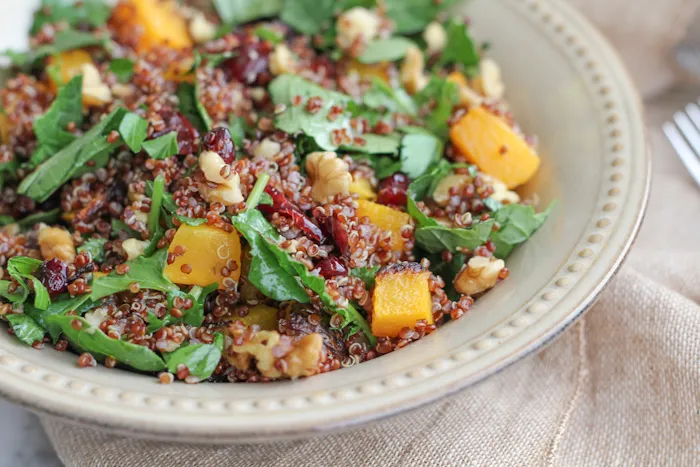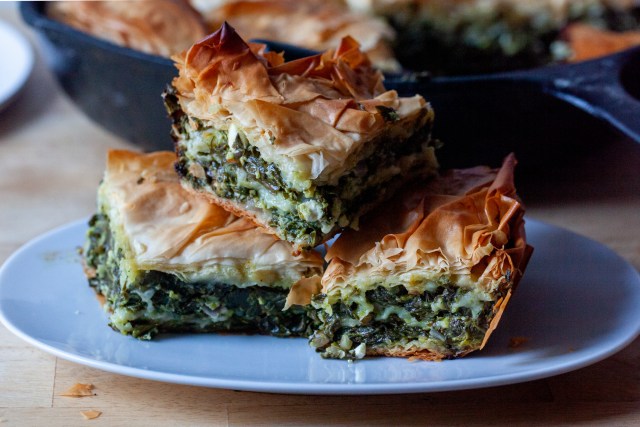Superfoods that are popular are often high in carbs, even if they are healthy and…

7 Mistakes to Avoid When Baking Holiday Cookies
My fondest Christmas memories involve spending an entire day during the holiday season each year making my mother’s famous Christmas cut-out cookies. This was a ritual in our family, and the one year Mom suggested she had far too much on her plate to “do those cookies this year,” all hell broke loose. The kids ended up convincing her to see it our way. It’s safe to say (other than that one close call), we never missed a Christmas baking cut-outs together–and it wasn’t just the three girls of the house who participated. At some point throughout the process each year, my five (yes, five) older brothers lazily wandered into the kitchen one-by-one, drawn by the scent of vanilla, almond, and sugar. We’d bake batch after batch until the entire countertop was covered with stars, trees, bells, and other Christmas shapes. After the cookies cooled, the real fun started. Mom would whip up 3 to 5 different colors of icing, dropped containers of multicolored sprinkles in front of us, handed us all butter knives, and let her eight children go to town. It was every man for himself until every last cookie was completely coated in gooey frosting, and icing was splattered thoroughly over the counters, floors, cabinets, and refrigerator. This is one of the dear holiday traditions I’ll always hold close, and even as an adult, I always return home every Christmas to partake the treasured ritual with my mom and siblings–even if it’s at midnight on Christmas Eve. I’ve learned a lot about cookie making from many hours spent, over many years, dedicated to perfecting the frosted sugar cookie, and it’s safe to say I’ve made many mistakes along the way. After all, I’m only qualified to write this post because I’ve committed all of these mistakes myself, at least once. If you can, learn from my mess-ups before you even tie on an apron.
Here are the top 7 newbie mistakes to avoid when baking holiday cookies.
1. You don’t cream the butter and sugar together long enough
Many people don’t realize this, but when a recipe says to beat the butter and sugar together until “pale and fluffy,” it means several minutes-worth of beating. In other words, 30 seconds is not enough time to get those two ingredients fully mixed. Creaming means to rapidly beat the fat and sugars together, which incorporate airs, adds fluffiness, and lightens the overall color (and texture) of the mixture. If you try to cut corners in creaming your butter and sugar, you’re apt to end up with a grainy, gritty, and brittle cookie. One additional note here: You must use an electric mixer (hand or stand is fine) in this process. Trying to do this by hand with a whisk is a lost cause
2. You don’t chill the dough
Most holiday cookie recipes call for you to chill the mixed dough at least 30 minutes (or up to several hours) before scooping, or rolling, and baking the cookies. Please, follow the recipe. Chilling dough allows the fat (i.e. butter) in the dough to re-solidify, causing the dough to firm up (duh), which means your cookies won’t spread as much in the baking process. This will yield a thicker, moister, better-looking cookie. On that note, here’s a little pro tip: for a consistenylu better cookie, you should always allow your cookie dough some time to chill in the refrigerator–even if the recipe doesn’t blatantly call for it.
3. You don’t roll out the dough with enough flour
Rolling out dough for cut-out cookies isn’t hard, but it may at first seem like a sticky mess if you don’t know what you’re doing. The exetent of the instructions you receive for most recipes is to “place dough on a lightly floured surface; roll out.” In my opinion, this far oversimplifies things–especially for a first-timer who needs the extra instruction. While the surface (I usually use a larg cutting board) should be sprinkled evenly and lightly with flour, you’ll also need to flour your rolling pin, the cookie cutters themselves, your hands, and continue to lightly flour all of these things again and again, as needed, throughout the rolling and cutting process. Meaning, just plan to keep your flour bin out and handy. Keep in mind–they use the term lightly for a reason; each time you add flour, you should only daintly dust your surfaces. You don’t want to continually add more flour (thus, gluten) into the dough than necessary, as this will yield one tough cookie. You’ll know when it’s time to add additional flour when the dough starts sticking to the rolling pin, cutting board, or cookie cutters.
4. You try to do everything at once
No matter how experienced of a baker you are, if you try to put together a second batch of cookie dough, monitor your baking time for the cookies already in the oven, and whip up frosting simultaneously, you’re bound to make a mistake or miss a crucial step (including taking cookies out of the oven before they burn). Just when you think you’re unstoppable in the kitchen, you’ll realize you added 1 tablespoon of baking soda instead of 1 teaspoon, or you’ll dump too much liquid in the frosting (see below). I speak from experience, over-multitasking does not make for an efficient workflow. Trust me on this one: Either solicit a few extra sets of hands by inviting others into the kitchen for a Christmas cookie-baking party or set aside a day, put on some Christmas tunes, pour yourself a glass of wine, and take. your. time. Don’t forget: We’re talking COOKIES, this should be fun. There’s no need to rush the process.
5. You don’t allow the cookies to cool on the baking sheet
For those of us that are prone to fall prey to mistake #4 above, you’ve probably found yourself committing this cookie faux paus a time or two. The absolute best way to wrinkle your beautiful Christmas trees and break the head off your snowmen after you’ve spent all that time preparing them is to try removing them from the cookie sheet before they’ve had adequate time to set. I know, I know–you need that cookie sheet to get your next batch in the oven and you want to speed the process along–been there, done that. Ever heard that good things come to those who wait? Well, that advice definitely applies in this scenario.
6. You don’t allow the cookies to cool completely before icing them
Imagine this: You just spent 3 minutes delicately frosting and decorating that one beautiful Christmas star cookie (your masterpiece!), you turn around for two seconds to grab your next blank cookie canvas, and when you look back to your work station, the icing is pathetically drooping down the sides of the cookie. If you’ve ever iced a batch of cookies, you probably know exactly what I’m talking about. Here’s my advice for allowing cookies to cool completely and avoid the heartbreaking mess: Lay individual sheets of parchment paper on your countertop and, as different batches of cookies come out of the oven, remove them from the sheet and lay each dozen of cookies on a separate piece of parchment–ordered from the first batch taken out of the oven to most recent. This will allow you to keep the various batches separate, and you can check the temperature of one cookie in a batch and know the same temperature (whether warm or cool) applies to the rest of the batch. When one cookie in a batch has fully cooled, you’re ready to ice that particular batch.
7. You put too much liquid in your icing
Runny icing is an all-too-common baking newbie mistake because powdered sugar can appear like it needs more liquid than it does–when, in reality, it doesn’t need much water or milk to thin it out. Here’s my advice: Start small; and I mean really small. Add liquid a 1/2-tablespoon at a time into your butter and powdered sugar mixture, and beat together with an electric mixer until you reach the right consistency. Or if you want to go beyond the basic glaze, try incorporating meringue powder into the mix to make royal icing. And if you plan to make colored icings for decorating, I strongly recommend going with gel food coloring over the typical coloring drops you find on the baking aisle of most grocery stores. Not only does gel food coloring provide an intenser and more easily controlled color, but it does not add nearly the amount of moisture that standard food dyes do. It’s so easy to overly thin-out an icing (and lots of other things) using the basic grocery store coloring. You can find gel food colorings at most any major craft or hobby store, and trust me–it’s seriously worth the trip, especially during prime baking season.



